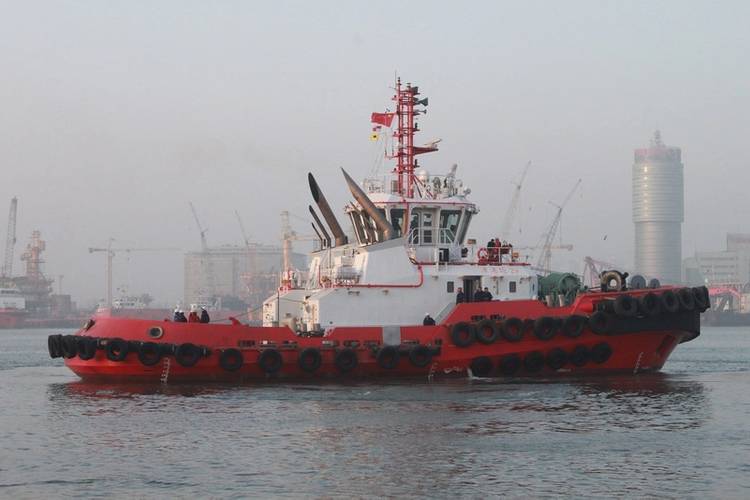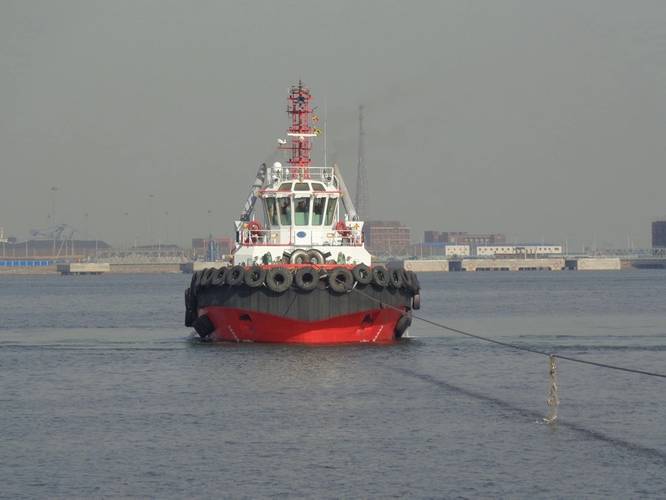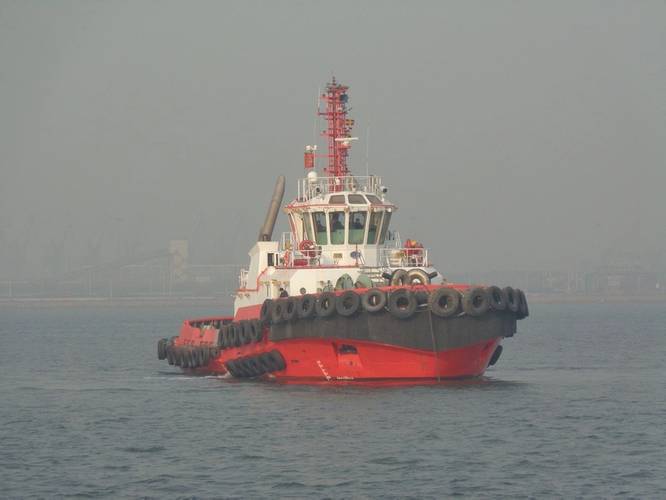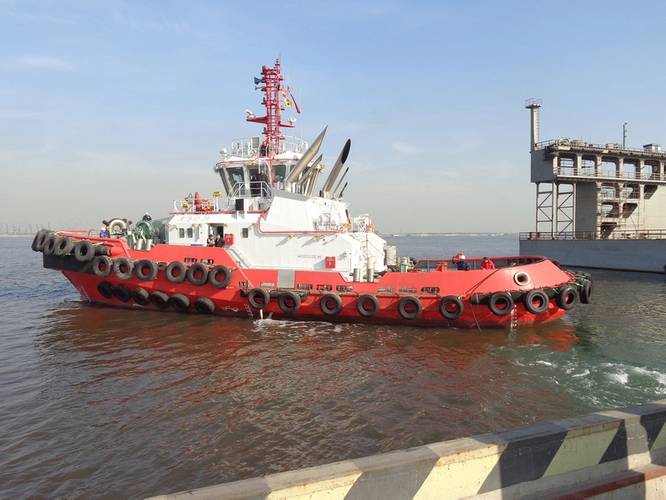As a part of its tug fleet upgrade program, Tianjin Port of China retained Robert Allan Ltd. in early 2012 to develop several new tug designs to suit its operational requirements. The program involved five tugs of three distinct designs. The recent delivery of the RAstar 3500 class tugs Jin Gang Lun 28 and Jin Gang Lun 29 marked the conclusion of this program. The two latest vessels were constructed by a local shipyard, CCCC Bomesc Marine Industry Co. Ltd. in Tianjin city.
Compared to the earlier tugs Jin Gang Lun 26 and Jin Gang Lun 27 which are of the RAmparts series, the Jin Gang Lun 28 and Jin Gang Lun 29 are designed with the hull form of the RAstar series. As a part of an internal R&D program at Robert Allan Ltd., a set of CFD simulations was carried out in order to quantify the differences in hull resistance in calm water and the motions in beam seas of the RAmparts 3500 and RAstar 3500 hull forms. The CFD simulations concluded that with similar resistance performance at the design speed of 14 knots, roll angle and roll acceleration of the RAstar 3500 design is about 22% and 12% lower than that of the RAmparts 3500 design respectively in beam seas of irregular waves.
The Jin Gang Lun 28 and Jin Gang Lun 29 were designed and built in accordance with Chinese Classification Society requirements for sea going vessels, with the following notations: CSAD, Tug, Coastal Service, Ice Class B; and CSMD, BRC.
Each tug is fitted with a Fi-Fi system equivalent to Fire Fighting 1, although this feature is not included in the Class notations.
Particulars of Jin Gang Lun 28 and Jin Gang Lun 29:
Length overall: 35 m
Beam, molded, extreme: 12.4 m
Depth, molded (hull): 5.4 m
Maximum Draft: 4.22 m
Major tank capacities:
Fuel Oil: 183 m³
Fresh Water: 30 m³
Foam: 20 m³
Main propulsion for each tug consists of a pair of Niigata 8L28HX diesel engines; each rated 2,206 kW at 750 rpm, and each driving a Kawasaki, KST-220ZC/B-2.7 controllable pitch Z-drive unit, in ASD configuration. The electrical plant comprises three identical diesel gen-sets, each with a power output of 100 ekW.
Similar to the other tugs of this construction program, the vessels have been outfitted for a normal operating crew of 14. The master’s cabin is located on the main deck. The chief engineer and other crew cabins are located on the lower accommodation deck.
The deck machinery comprises two ship-assist hawser winches forward, and a tow hook on the aft deck. In addition, a capstan is installed aft to facilitate line handling operations.
Robert Allan Ltd. noted that the wheelhouse is designed for maximum all-round visibility with a U-shaped control station providing good visibility to both fore and aft deck working areas.
Ship-handling fenders forward consist of one row of 700 x 350 cylindrical fender at the main deck lever, with 600 x 400 mm M block fenders between the main deck and the knuckle. Steel half pipe fenders with elements of 400 x 400 “D” fender provide protection at the main and foc’sle deck sheer lines, and a 500 x 250 cylindrical fender is used at the stern. In addition, heavy tires are provided all around the vessel.
On trials, the Jin Gang Lun 28 and Jin Gang Lun 29 met all performance expectations, with the following results bollard pull ahead of74.5 metric tons and free running speed of 14 knots.


















